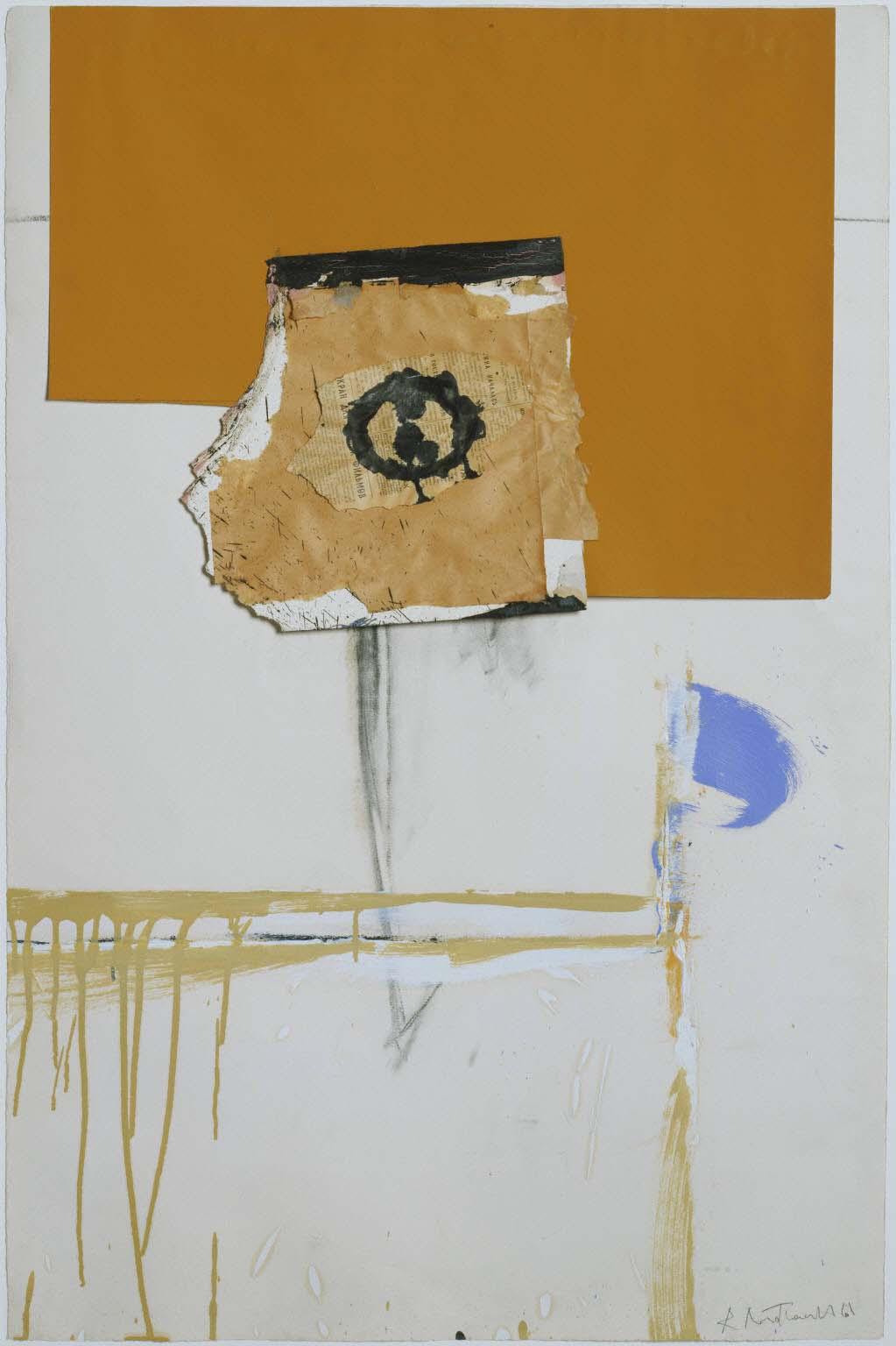In White and Yellow Ochre
Robert Motherwell ( 1961 )

As a member of New York’s Abstract Expressionist group from the beginning in the 1940s, Robert Motherwell favored abstraction and considered collage as powerful a method of expression as painting. He began working in collage in 1943, gradually developing it as a medium that not only complemented, but at times also directed and shaped his paintings. He created images that were ambiguous in their expression and open to varied interpretations, working with no preconceived subject matter arranging and combining colors, forms, and patterns that evoked a distinct emotion—be it joy, terror, mystery, or nostalgia. He carefully chose colors and forms that most effectively evoked sensory response. Motherwell focused on materials that had the power to express and animate the picture plane, which he called the “void.” He chose colors—yellow ochres, blues, black, white, red—that had “rich associative meanings” for him.
The medium of collage, in which readymade materials are taken out of context and placed in new, sometimes haphazard spaces, is particularly well suited to this method of chance association. Because he used materials found in his immediate surroundings, Motherwell considered his collages as “a kind of privately coded diary, not made with an actual autobiographical intention, but one that functions in an associative way.”
Motherwell experienced a renewal of experimentation and creativity between 1959 and 1961, executing numerous collages, including In White and Yellow Ochre. The painting is an abstract, enigmatic, and complex image. While its central motif might allude to an upright figure, elements in the upper register could be interpreted as a landscape with an implied horizon line. A refined, decorative quality arises from the muted colors, the sparse brushstrokes and drips, and the calligraphic nature of the newsprint in the central fragment. Such restraint is shattered, however, by the ragged, torn edges and splattered ink spots of the newsprint motif, whose black staring eye jars the viewer into acknowledging the existence of darker portents.
The sophisticated air and controlled expressiveness of In White and Yellow Ochre makes a strong statement about the artist’s temperament, a combination of reserve and expressiveness that Duncan Phillips had hailed and valued not only in Motherwell’s work, but in some of his colleagues—notably Bradley Walker Tomlin and Philip Guston—as particularly engaging.